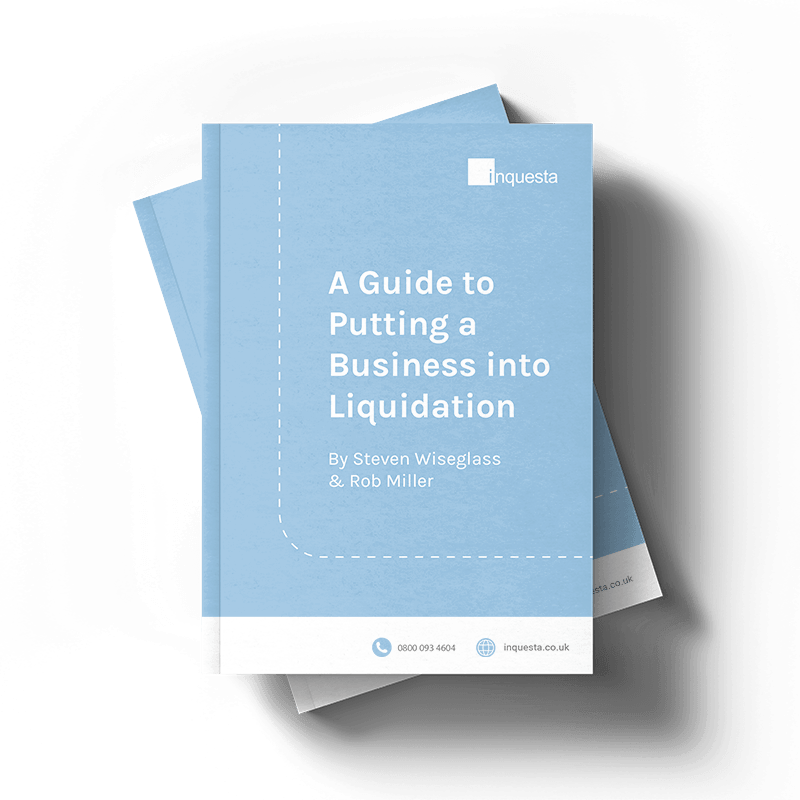What is the Liquidation of a Company?
The liquidation of a company commonly occurs when it does not have enough funds to satisfy its obligations and cannot be rescued. The process places the firm in the hands of a liquidator, whose role it is to facilitate an orderly closure and ensure that as much money is raised as possible to pay off creditors and shareholders.
It is also possible to liquidate a company that is financially stable. This option is usually chosen if the business owners wish to retire, or the firm is no longer required. This voluntary procedure, known as a Members Voluntary Liquidation (MVL), is often extremely tax-efficient and ensures shareholders and company directors receive as much money back from the enterprise as possible.
There are two main types of company liquidation, voluntary and compulsory. As the name suggests, a voluntary liquidation occurs when a firm’s shareholders and creditors (where necessary) agree that closing down the business is the best course of action. This can either be if the company is solvent enough to satisfy its debts (as explained above), or is struggling financially. A compulsory liquidation, meanwhile, occurs when a firm’s creditors apply to have it shut down via a winding up order.
Whatever the circumstances, a liquidator will be appointed (either by the directors themselves or the courts) to oversee the entire process. They will primarily have a duty to the courts to ensure that everything is above board and the directors did not do anything untoward to affect the financial state of the firm. In the case of a MVL, they will also work with their clients to ensure the business is closed in the most tax-efficient way possible.
If your company is struggling financially, or you wish to close your business for another reason entirely, it is important to seek specialist assistance as soon as possible. This is especially true for insolvent businesses, as waiting for your creditors to take action against you will mean you lose control of the liquidation process and makes everything much more complicated.
The Company Liquidation Process
The precise steps of the company liquidation process will vary depending on the circumstances of your business. Despite this, there are a few points that remain the same. These include:
- Appoint a liquidator
- Create a list of your company’s creditors
- Identify and appraise your firm’s assets
- Terminate all contracts (both present and future)
- Settle everything with your employees
- Pay creditors in order of priority
- Settle liquidator and administrator fees
- Ensure remaining funds are distributed amongst shareholders
The liquidator will take care of the majority of these tasks on your behalf. Once everything has been completed, your business will be struck off with Companies House.
Functions of a Liquidator of a Company
Ultimately, the main purpose of the liquidator of a company is to ensure that as much money is raised from the firm’s assets as possible. These funds will then be used to satisfy debts, pay for the liquidation itself, and be distributed to shareholders. A liquidator will also investigate the actions of the company’s directors.
There are a number of ways in which a liquidator will raise funds from the business. The first method is by appraising any assets the company may have and selling them at full market value. Potential assets include stock, property, plant and machinery, fixtures, and fittings.
A liquidator will also contact all debtors of their client (people who owe the business money) and try to collect payment. In addition, they will investigate any antecedent transactions the company has made, and look for potential signs of irregularity.
Download our FREE Guide to Liquidation
If your business has received a winding-up petition, understanding the liquidation process is vital. If you aren’t able to get your winding up petition dismissed, or addressed in another way, it can easily lead to compulsory liquidation if not addressed quickly, making it essential to explore your options and take well-informed action.
Our FREE Liquidation guide provides clear, expert advice on:
- Key warning signs that your business may be in danger of possible liquidation.
- Which insolvency options are available and which ones best suit your situation.
- What the liquidation process looks like
- Things you should be aware of throughout the process.
- What life after liquidation looks like.
If you’re considering liquidation or seeking more information, download our comprehensive Liquidation Guide and explore everything you will need to know.

The Methods of Limited Company Liquidation
There are three main methods of limited company liquidation — Creditors Voluntary Liquidation, Members Voluntary Liquidation, and Compulsory Liquidation. The first two are carried out according to the wishes of the firm’s directors and shareholders, while the latter is applied for by the company’s creditors. They all involve the closure of a business and the distribution of its assets.
As you would expect, a voluntary liquidation is often much more straightforward than a compulsory one. This is because the firm’s directors will still retain a lot of control (for example over which liquidator to appoint), whereas a compulsory liquidation will be taken out of their hands completely. Here are the three types of limited company liquidation in more detail:
How Inquesta can Help with the Liquidation and Winding Up of a Company
As a licensed insolvency practitioner, industry-recognised liquidator, and specialist forensic accountant, Inquesta is able to provide a holistic service that is difficult to match. We have amassed decades of experience with helping business owners from a wide range of sectors liquidate their company in the most hassle-free way possible.
From the outset, we place the best interests of our clients at the forefront of everything we do. Our process starts with an initial consultation, where we will perform a quick analysis of your circumstances and discuss your options, plus how we can help. We can also perform a full review of your firm’s solvency, and will take care of the entire liquidation process on your behalf.
Our expertise in forensic accounting also enables us to carry out an in-depth review of a company’s actions and transactions on behalf of shareholders or creditors. Whatever you require, we are perfectly placed to help.
When it comes to something as serious as liquidation, it is essential to leave nothing to chance. You need to work with Inquesta.
Get In Touch
Our Specialist Team
As specialist liquidators and licensed insolvency practitioners, Inquesta’s expert team are perfectly placed to assist — no matter your circumstances.

Steven Wiseglass
Director of Insolvency
A co-founder of Inquesta, Steven is a licensed Insolvency Practitioner with over a decade of experience in the field. He is a member of the Insolvency Practitioners Association, Association of Business Recovery Professionals (R3), and his insolvency licence is issued by the Insolvency Practitioners Association. In addition, he sits on the R3 committee of the North West Regional Committee.
Steven specialises in advising directors of small to medium-sized businesses, and has a wealth of expertise in providing the most appropriate advice whatever the firm’s circumstances may be. He has also been instrumental in helping company directors save their business and rebuild them into successful enterprises.




